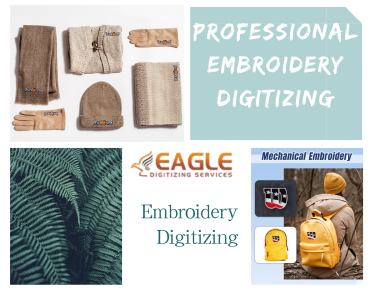How to Choose the Right Embroidery Digitizing Plan for Different Fabrics
Embroidery digitizing is a crucial step in transforming your creative designs into beautiful embroidered pieces. However, choosing the right digitizing plan for different fabrics can be a daunting task. The type of fabric you choose can significantly impact the final outcome of your embroidery project. Therefore, understanding the nuances of fabric types and how they interact with embroidery digitizing is essential. Whether you're working with delicate silks or sturdy denim, selecting the appropriate digitizing plan can make all the difference. For those looking to explore more about embroidery digitizing, machine embroidery digitizing offers a wealth of resources and insights.
Understanding Fabric Types
Before diving into the specifics of digitizing plans, it's important to understand the different types of fabrics commonly used in embroidery. Fabrics can be broadly categorized into natural and synthetic materials. Natural fabrics like cotton, linen, and silk are known for their breathability and softness, while synthetic fabrics such as polyester and nylon are valued for their durability and resistance to wrinkles.
Natural Fabrics
Natural fabrics are often preferred for their aesthetic appeal and comfort. Cotton, for instance, is a versatile fabric that works well with most embroidery designs. However, its tendency to shrink must be considered when planning your digitizing strategy. Linen, another popular choice, offers a unique texture but can be challenging due to its tendency to fray.
Synthetic Fabrics
Synthetic fabrics, on the other hand, are often used for their strength and ease of maintenance. Polyester is a common choice for sportswear and uniforms due to its durability. However, its slick surface can pose challenges for embroidery, requiring careful digitizing to ensure the stitches hold well.
Choosing the Right Digitizing Plan
When selecting a digitizing plan, consider the fabric's characteristics and how they will interact with the embroidery design. For instance, a dense design on a lightweight fabric like silk may cause puckering, while a sparse design on a heavy fabric like denim may not stand out as intended.
Density and Stitch Type
The density of your embroidery design is a critical factor. For lightweight fabrics, opt for a lower stitch density to prevent puckering. Conversely, heavier fabrics can handle higher stitch densities, which can enhance the design's visibility. Additionally, the type of stitch used can affect the outcome. Satin stitches, for example, are ideal for smooth, curved designs, while fill stitches are better suited for larger, solid areas.
Backing and Stabilizers
Backing and stabilizers play a vital role in embroidery digitizing. They provide the necessary support to the fabric during the embroidery process, preventing distortion and ensuring a clean finish. The choice of backing depends on the fabric type and the complexity of the design. Tear-away backings are suitable for stable fabrics, while cut-away backings offer more support for stretchy or delicate materials.
Practical Tips for Different Fabrics
Here are some practical tips for choosing the right digitizing plan for various fabrics:
- Cotton: Use a medium-density design with a tear-away backing. Avoid overly dense designs to prevent fabric distortion.
- Silk: Opt for a low-density design with a cut-away backing. Use fine needles to minimize fabric damage.
- Denim: High-density designs work well, but ensure the needle is suitable for heavy fabrics to avoid breakage.
- Polyester: Use a medium-density design with a cut-away backing. Test the design on a scrap piece to ensure the stitches hold.
Advanced Techniques and Considerations
For those looking to push the boundaries of embroidery digitizing, advanced techniques such as 3D puff embroidery and applique can add depth and dimension to your designs. However, these techniques require careful planning and execution to ensure the final product meets your expectations.
3D Puff Embroidery
3D puff embroidery involves using foam to create a raised effect on the design. This technique is particularly effective on caps and jackets, where the added dimension can make the design pop. However, it requires precise digitizing to ensure the foam is adequately covered by the stitches.
Applique
Applique involves layering fabric pieces onto the base fabric and securing them with embroidery stitches. This technique is ideal for adding color and texture to designs but requires careful digitizing to ensure the applique pieces are accurately placed and secured.
Future Trends in Embroidery Digitizing
As technology continues to evolve, the future of embroidery digitizing looks promising. Innovations in software and machinery are making it easier than ever to create intricate designs with precision and efficiency. Additionally, the growing demand for personalized and custom embroidery is driving the development of new techniques and materials.
For those interested in exploring the latest trends and techniques in embroidery digitizing, embroidery digitizing offers a wealth of information and resources. Whether you're a seasoned professional or a hobbyist, staying informed about the latest developments can help you stay ahead of the curve.
In conclusion, choosing the right embroidery digitizing plan for different fabrics requires a thorough understanding of both the fabric characteristics and the design requirements. By considering factors such as stitch density, backing, and advanced techniques, you can ensure your embroidery projects are successful and visually appealing. Eagle Digitizing excels in providing professional embroidery digitizing services, ensuring every design is crafted with unmatched precision.
.png)


.png)